Working with landholders, volunteer and regional partners, the project aims to undertake collaborative searches, workshops and translocations leading to new and increased population numbers whilst maintaining genetic diversity.
Safeguarding South Australia's Most Endangered Flora Species
SA Botanic Gardens and State Herbarium
The Project
Working with landholders, volunteer and regional partners, the project aims to undertake collaborative searches, workshops and translocations leading to new and increased population numbers whilst maintaining genetic diversity.
Why we need to act
This project clearly aligns with the vision of preventing the extinction of Australian Flora. The target species (excepting Lordhowea pilosicrista which is currently under assessment) are listed under the EPBC Act and all are critically at risk of extinction. Based on 20 years field work searching for populations of threatened plants these species were selected as high priority due to observed decline in populations that are restricted in range, have one or very few recorded populations with low plant numbers. However, these species do not need to die out as they can be successfully propagated for recovery. The outcome in all cases is to seek a suitable conservation strategy that negates immediate extinction risk and provides an increased insurance against extinction.
Plant extinction can be circumvented by implementing key conservation actions. While each species involves a tailored strategy based on niche habitat and regional resources, there are simple, effective actions that will ensure conservation of the species and provision of propagules for future projects.

Conserving Plants in a Changing World
Because of the myriad and often compounding threats that plant species currently face, this is no easy task. On top of land clearing, habitat fragmentation and invasive species, a warming climate across the globe is driving changes in physiological processes, species distributions and ecosystem functions.
Shifts in aspects like flowering times, and species abundance, is already being documented here in Australia.

The Species
The seven endangered target species proposed in this project are:
The Seven endangered target species in this project are:
Spiny Daisy (Acanthocladium dockeri) - only known from a few roadside populations and a translocated population at Banrock Station. (EPBC: CE)
Bayonet Spider-Orchid (Caladenia gladiolata) - only two known localities with less than 200 flowering individuals recorded in 2022. (EPBC: E)
Tall Yellow-top (Lordhowea pilosicrista) - only currently known from Billiat CP in South Australia and endangered in Victoria. (EPBC Act provisional nomination - under assessment)
Lowly Greenhood Orchid (Pterostylis despectans) - only three known localities in South Australia, less than 200 plants. (EPBC: V)
Goldsack's Leek-Orchid (Prasophyllum goldsackii)- only a few extant populations on Yorke Peninsula and Eyre Peninsula. (EPBC: E)
Superb Groundsel (Senecio megaglossus) - mainly restricted to Dutchman's Stern CP with the current status for many historic populations unknown, some confirmed extinct. (EPBC: V)
Large-club Spider-orchid (Caladenia macroclavia) - this endangered orchid is endemic to Yorke Peninsula and is known from three small unreserved populations with less than 200 plants. (EPBC: E)
These species historically have a small distribution, occur in fragmented landscapes and have an ongoing decline in population numbers.
Solution and approach
These species and populations do not need to become extinct in the short term. There are simple actions we can undertake working with regional partners to improve the outlook for some key priority species:
Survey and Monitoring The SASCC has undertaken surveys and monitoring of many endangered species and is currently working with Department for Environment and Water - Conservation and Wildlife Branch to provide the data required for assessment under federal legislation of at least 20 species. For this project they would undertake population counts and collect associated data using Survey 123 for incorporation into Biological Data Base of South Australia. This is a standard methodology that will allow for easy data incorporation.
Seed Banking and Storage The SASCC will provide in-kind support for seed drying, cleaning, testing and support as per germplasm guidelines of the Australian Seedbank Partnership.
Germination and Propagation Effective methods for germination are developed in the laboratory as part of routine seed assessment at the SASCC. Previous results have shown that Acanthocladium dockeriseeds require no pre-treatment and the Senecio species will have increased germination after treatment with a plant hormone (Gibberellic Acid). Orchid propagation requires complex aseptic laboratory methods. This work requires isolation of symbiotic mycorrhizal fungi from living orchid tissue. Samples of root/collar tissue will be used for fungal isolation during the winter months. These isolates are then screened using appropriate media with seeds to obtain isolates effective for seed germination. Symbiotic seed germination will use thousands of seeds, success can range between 5 to 90% depending on the species. Several hundred seedlings will be grown in-vitro in flasks potted out into the nursery to obtain sufficient plants for translocation.
Construction of exclosures Exclosures are generally a 10 by 10 metre structure. They use a cyclone mesh fencing material 135cm high with a 4cm aperture, 1.65 metre steel star pickets are used for corner posts strained to diagonally placed smaller star pickets to provide stability, a further 165cm star picket is placed at 5 metre intervals between corners. High tensile wire is strained along the top and bottom of the cyclone mesh to provide stability, some pictures of the exclsoures are provided in the attachments.
Translocations The translocation itself is also an inherently simple exercise but includes decisions about site selection, time of establishment, disease and prevailing climatic conditions. Where applicable translocation plans will be developed with the NPWS regional ecologists to address these issues and ensure these projects are set to succeed. The SASCC has extensive experience in undertaking site selection and translocation that will assist in this process.
Monitoring of translocations Data on translocated plants has been collected previously by the SASCC, it includes the provenance material of the plants, site location, unique identifying tags, records of plant attributes (eg leaf length, tuber size), total number planted and any other relevant data. The unique tags can be used to identify the plants for follow up monitoring. |
The major project outcome will be to double the current world’s population of these seven species.
Polygons mapped for areas searched for new records/ rediscovery of historic records.
Plant counts and areas of occupancy mapped for all known populations within the regions. This data to be supplied to BDBSA.
Number of seeds collected, fungi isolated or cuttings taken for propagation.
Number of seeds banked from each population and effective fungal isolates stored at subzero temperatures.
Numbers of plants propagated for translocation.
Number of exclosures erected and plants translocated.
In subsequent years’ survival and recruitment data will be collected annually by a collaboration between staff at the SASCC and land managers to assess what worked and what may need a different approach. In addition, material taken from the insurance populations for banking or propagation will be tracked.
All species are protected under the EPBC Act.
All properties undertaking translocations have suitable and enduring protections that carry with title regardless of landholder.
Properties in use are either in NPWS system and formally gazetted as conservation parks or they are Heritage Agreements protected on title by declaration of the Minister for Environment.
Our project partners include the Adelaide Botanic Gardens Foundation and the South Australian Seed Conservation Centre (SASCC) as well as working with landowners, Non-government Organisations (e.g., Australian Landscape Trust) and the National Parks and Wildlife Service South Australia.
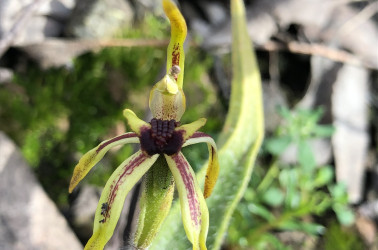
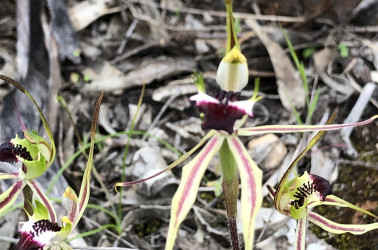
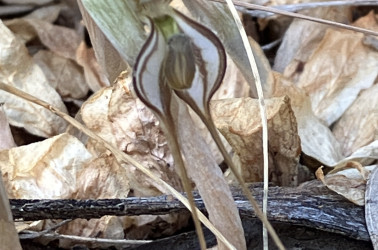
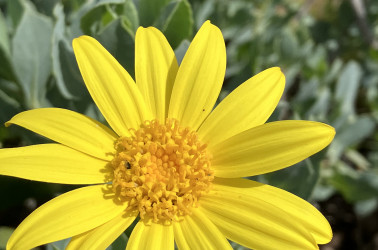
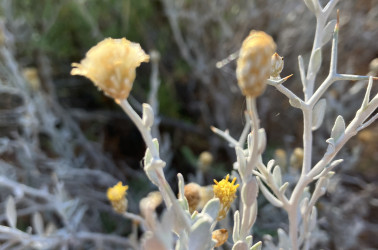
Follow our cause in saving Australia's endangered wildlife, and receive newsletter updates on the Saving Endangered Flora Species and other projects and successes.








